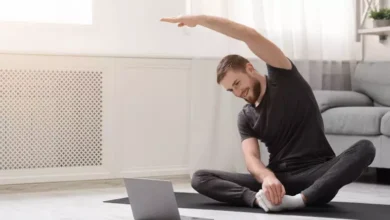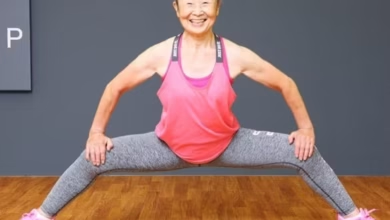See more CONTENT like this. Follow our PAGE

Muscular endurance at home: the 7 most effective exercises
Improving muscular endurance at home may seem like a challenge without access to a gym, but with the right exercises, it’s absolutely possible. The key is focusing on movements that involve multiple muscle groups, maintain constant effort, and can be progressively adapted as your stamina and strength increase. Below are the 7 best exercises for anyone who wants to improve muscular endurance at home, plus practical tips to build a complete routine.
Squats (and variations)
Squats work your legs, glutes, and core, making them highly versatile. Start with bodyweight squats, then progress to jump squats or single-leg squats for more difficulty. Jump squats demand more power and cardiovascular effort, while single-leg squats challenge balance and motor control.
Push-ups
Great for strengthening the chest, shoulders, and triceps, push-ups also require core activation. You can progress from the classic version to clap push-ups or diamond push-ups for added challenge. The more repetitions you can perform with good form, the better your muscular endurance in the upper body.
Plank (and variations)
For core endurance, the plank is unbeatable. The traditional forearm plank builds stability; the side plank targets the obliques; and the plank with leg lifts adds extra demand on glute stability. Holding these positions for longer periods is a great way to develop endurance and trunk strength.
Lunges
Lunges engage the quads, glutes, and hamstrings while improving balance and coordination. Alternate between forward, reverse, and lateral lunges to keep your home training varied and effective.
Glute bridge
Simple yet powerful, the glute bridge primarily targets the glutes and posterior chain. To progress, try the single-leg bridge or elevate your shoulders on a bench or chair for more intensity.
Burpees
One of the most complete exercises: squat, plank, push-up, and jump all in one. Burpees challenge both cardiovascular fitness and muscular endurance quickly and effectively, making them perfect for training muscular endurance at home using just bodyweight.
Circuit training
While not a single exercise, circuit training is an excellent strategy. Combine squats, push-ups, planks, lunges, and burpees into a sequence repeated 3 times with minimal rest. This stimulates both muscular and cardiovascular endurance.
How to build an effective routine at home
- Frequency: Aim for 3–4 sessions per week, alternating focus between upper body, lower body, and core.
- Progression: Start with moderate reps and time, then gradually increase as your endurance improves.
- Variety: Alternate variations weekly to prevent plateaus—for example, jump squats one week, bodyweight squats the next.
- Rest & recovery: Even at home, rest days are essential. Balance intense sessions with stretching or lighter movements.
- Track progress: Record plank times, reps per exercise, or completed circuits. Monitoring progress keeps you motivated and helps adjust your plan.
Benefits beyond endurance
Training muscular endurance at home delivers more than conditioning. It improves posture, daily functional capacity, balance, mobility, and coordination. Plus, exercises like burpees and squats burn calories, support weight management, and boost cardiovascular health.

Hello! My name is Alan Teixeira and I am passionate about helping people live healthier, more balanced lives. From mindful eating to daily habits that promote physical and mental well-being, I believe that small, consistent changes can lead to powerful transformations.
I created this blog to share practical tips, reliable information, and thoughtful insights that can inspire you to take better care of yourself—with balance, mindfulness, and positivity.
If you are looking to improve your health, nourish your body, and build a lighter, more fulfilling routine, you are in the right place. Welcome!





